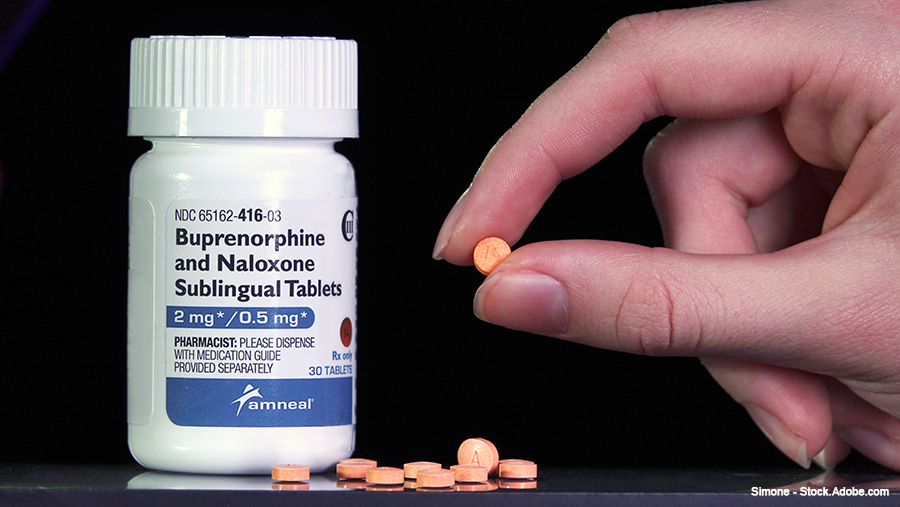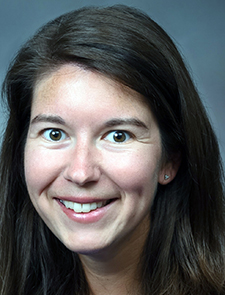 This session was a high-yield overview of the management of hospitalized patients with opioid use disorder (OUD) presented by Dr. South, an addiction medicine physician who treats patients with substance use disorders and assistant professor at the University of Kentucky College of Medicine in Lexington, Ky., and Dr. Holmes-Maybank, an associate professor at the Medical University of South Carolina in Charleston, S.C. and a national correspondent for The Hospitalist. As the prevalence of OUD and the number of overdose deaths continue to rise in the U.S., hospitalists can play a key role in providing lifesaving management of patients with OUD. This session focused on the initiation and management of medication for opioid use disorder (MOUD), harm-reduction strategies for patients with OUD in the inpatient setting, and additional challenges hospitalists may face when caring for patients with OUD.
This session was a high-yield overview of the management of hospitalized patients with opioid use disorder (OUD) presented by Dr. South, an addiction medicine physician who treats patients with substance use disorders and assistant professor at the University of Kentucky College of Medicine in Lexington, Ky., and Dr. Holmes-Maybank, an associate professor at the Medical University of South Carolina in Charleston, S.C. and a national correspondent for The Hospitalist. As the prevalence of OUD and the number of overdose deaths continue to rise in the U.S., hospitalists can play a key role in providing lifesaving management of patients with OUD. This session focused on the initiation and management of medication for opioid use disorder (MOUD), harm-reduction strategies for patients with OUD in the inpatient setting, and additional challenges hospitalists may face when caring for patients with OUD.
First, the presenters reminded the audience of the mortality benefits of MOUD. The majority of people with OUD never receive MOUD, but MOUD saves lives. People with OUD who are not on MOUD have a mortality rate of more than six times that of the general population; with MOUD, the mortality rate decreases to less than twice that of the general population. Hospitalization can provide an opportunity to start lifesaving treatment with MOUD. As of 2023, providers no longer need an X-waiver to prescribe buprenorphine. Any provider with a Schedule II DEA can now prescribe buprenorphine, so hospitalists can and should prescribe this evidence-based treatment for patients with OUD.
The presenters provided an overview of the initiation of buprenorphine-naloxone in various clinical settings. Traditionally, buprenorphine-naloxone is initiated in patients who are in moderate withdrawal with Clinical Opiate Withdrawal Scale scores greater than or equal to 8. For a traditional induction, patients should not have received short-acting opiates, long-acting opiates, or methadone in the last 12, 24, or 72 hours, respectively. Buprenorphine-naloxone can also be initiated in patients who are NOT in opioid withdrawal and have not received opiates in the last five days. In these patients, buprenorphine is initiated at a lower dose than is used in a traditional induction.
The presenters also highlighted low-dose buprenorphine initiation or microdosing. Microdosing is an alternative strategy of initiating MOUD in the inpatient setting. The need for an opiate “washout” period prior to traditional induction of buprenorphine-naloxone can create challenges, especially in inpatients requiring short-acting opiates for acute pain. Initiating buprenorphine via microdosing allows patients to remain on short-acting opiates during the initiation of buprenorphine. Additional indications for microdosing rather than traditional induction of buprenorphine include daily fentanyl use (due to the drug’s unpredictable pharmacokinetics) and methadone use with a dose greater than 40 mg daily. The presenters provided sample three- and seven-day microdosing protocols using buccal or transdermal buprenorphine to bridge to sublingual buprenorphine-naloxone. Patients initiated on buprenorphine while on full opioid agonists can continue full agonists during their acute illness until the decision is made via shared decision-making to taper full agonists.
Patients initiated on buprenorphine-naloxone must be referred to an outpatient prescriber on discharge. Hospitalists should prescribe enough buprenorphine-naloxone to bridge until the outpatient follow-up appointment. All patients with OUD or with other risks for overdose should be discharged with naloxone. The presenters emphasized that patients being discharged to a facility should have access to MOUD; a facility refusing acceptance of a patient due to MOUD is a violation of the Americans with Disabilities Act.
Next, the presenters discussed two substances that are increasingly presenting challenges for hospitalists: fentanyl and xylazine. Fentanyl is 100 times more potent than morphine, and 50 times more potent than heroin. As fentanyl has become ubiquitous in the drug supply in communities, overdose deaths have increased by more than 250% between 2016 and 2021. As above, fentanyl’s unpredictable pharmacokinetics can make managing withdrawal and MOUD initiation difficult.
Xylazine is a non-opioid alpha-agonist used as a sedative in veterinary medicine. Xylazine has become a common adulterant in illicit opioids and non-opioids. Xylazine causes sedation, hypotension, bradycardia, and respiratory suppression, and is contributing to increasing overdose deaths. Xylazine may also cause skin ulceration and necrosis. There are no approved reversal agents, and xylazine is not routinely tested on urine drug tests or autopsies. Although naloxone does not reverse the effects of xylazine, naloxone should be administered to patients with suspected xylazine toxicity, as co-administration of opioids with xylazine is common.
Lastly, the presenters touched on hospitalists’ roles in harm-reduction strategies in caring for patients with OUD. Harm reduction is a patient-centered, nonjudgemental public health practice that focuses on mitigating the harmful effects of using illicit substances rather than requiring abstinence from substances. MOUD is a harm-reduction strategy and decreases mortality in patients with OUD even if a patient does not abstain from using other opiates. The presenters introduced the ARMS framework for harm-reduction counseling for patients who inject drugs:
A: Disinfect area with Alcohol
R: Keep naloxone in sight for Reversal
M: Use sterile Materials
S: Be mindful of Surroundings (never use alone)
Additionally, it’s important for hospitalists to treat pain and manage withdrawal appropriately in patients with OUD, as this decreases patient-initiated discharges and allows patients to receive treatment for the acute condition that requires hospitalization.
As hospitalists and experts in the field of addiction medicine, Drs. South and Holmes-Maybank provided a relevant overview of the care of hospitalized patients with opioid use disorder. It is crucial that hospitalists are well-versed in the management of patients with OUD, and this talk provided an excellent framework of evidence-based, up-to-date strategies for the care of this patient population.

Dr. Wimberly
Dr. Wimberly is a med-peds hospitalist and an assistant professor in internal medicine and pediatrics at the University of Kentucky in Lexington, Ky.